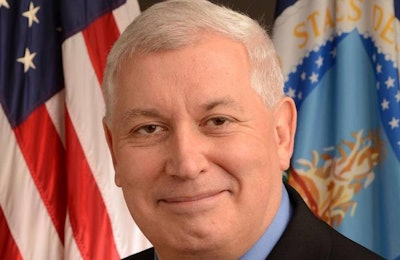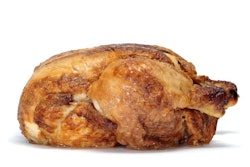
The U.S. Department of Agriculture (USDA) Veterinary Services (VS) agency has made some organizational changes, effective October 15.
In a letter to stakeholders, VS Deputy Administrator Jack Shere outlined the changes, which follow a significant reorganization of the agency that took place five years ago. While Shere said that many positive changes resulted from that reorganization, the agency has also received some feedback from employees, state partners and industry professionals that could lead to further improvements while adhering to Agriculture Secretary Sonny Perdue’s goal of making USDA the most effective and most efficient and best managed department in the federal government.
Service centers
Shere said “on the import-export side of the house,” VS plans to retain the service center structure, but will consolidate its six centers into four “to achieve management efficiencies and reduce our administrative footprint.”
“The number of employees supporting our import-export activities will remain unchanged, and current offices will remain open. With four centers, we can continue to offer the full array of services to importers and exporters while leveraging expertise that has been cultivated at respective centers over the last five years specific to products, live animals, germplasm and embryos, and pet travel certification,” said Shere.
Area veterinarians in charge and district offices
State partners provided VS with feedback about the importance of having an area veterinarian in charge (AVIC) as the primary point of contact for each state, so the agency to return to that structure.
The AVICs will work directly with state veterinarians serving as their primary point of contact for animal health questions and strengthening lines of communication. District offices will remain, but the number of offices will be reduced from six to four. However, Shere said there will not be any staff relocations.
“We are simply consolidating expertise and shifting reporting structures so we can provide better customer service,” he said.
Renaming of units
VS is renaming its three primary units to better reflect this new structure. The current units Surveillance Preparedness and Response Services (SPRS), National Import Export Services (NIES), and Science Technology and Analysis Services (STAS) will be replaced by Field Operations, Strategy and Policy, and Diagnostics and Biology.
Field Operations
Field Operations, according to Shere, will account for the bulk of VS’ workforce with approximately 1,150 positions. Field Ops will encapsulate both the Service Centers and the District Offices as well as Port Services and emergency response efforts. Team members at the local level will continue to meet with farmers and ranchers on a regular basis as they do now, Shere said. Dr. Brian McCluskey, who has been leading SPRS, will lead Field Operations.
Strategy and Policy
Strategy and Policy will be comprised of approximately 316 positions and will consolidate the VS trade policy, select agent work, and commodity animal health centers along with the Center for Epidemiology and Animal Health. Placing these groups together will reinforce linkages and ensure everyone has the full frame of reference to establish program direction, said Shere. Strategy and Policy will be led by Dr. Rosemary Sifford, who currently leads NIES.
Diagnostics and Biologics
Diagnostics and Biologics will encompass the agency’s National Veterinary Services Laboratories and the Center for Veterinary Biologics in Ames, Iowa. Dr. Beth Lautner, who has been leading STAS, will oversee this work and approximately 448 employees. As the National Bio and Agro-Defense Facility (NBAF) moves ahead, this alignment will help VS prepare for the increased diagnostics and scientific capabilities this facility will bring, Shere explained.
“These changes—many of which are internal facing—better position our program to meet the increasing demands for our services. I know change of any kind can be unsettling, but I ask that you give VS the opportunity to prove the value of these changes. There are so many facets to what we do today, and these shifts will help us align available resources internally and improve communication so that we can do a better job of serving you at all levels of our organization. Having worked many years in the field and more recently at headquarters, I know firsthand the value of these changes and the need to ensure everyone is connected,” Shere said.
VS will be sharing more information about these changes in the coming weeks through regularly scheduled commodity calls, meetings and of course at the upcoming U.S. Animal Health Association meeting in Kansas City in October.

















